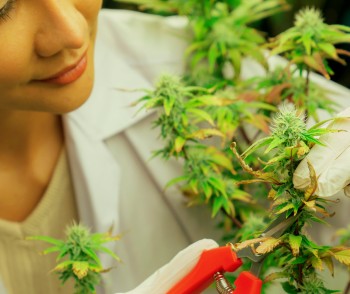
Cannabis cultivation has come a long way since the early days of unpredictable harvests and mixed-gender plants. One of the biggest turning points in this evolution came with the rise of feminized cannabis seeds, a breakthrough that changed how growers plan, cultivate, and profit from their crops.
Today, feminized genetics are the gold standard for anyone looking to maximize efficiency and yield, from small home growers to large-scale cultivators. But what exactly makes these seeds different, and why have they become so essential to modern growing?
The Evolution of Cannabis Seeds
Before feminized genetics, growers typically worked with regular cannabis seeds, which had a 50/50 chance of producing male or female plants. That uncertainty meant wasted space, nutrients, and time, since male plants needed to be identified and removed before pollination.
Modern breeding practices changed that forever. As cannabis science advanced, breeders began developing ways to ensure that seeds would only produce female plants, the ones responsible for the resinous, cannabinoid-rich flowers growers seek.
Thanks to that innovation, cannabis seeds today are more predictable, potent, and efficient than ever.
What Are Feminized Seeds?
Feminized cannabis seeds are created through a selective breeding process that encourages female plants to produce pollen. This is done by inducing a natural stress response (often using techniques like light manipulation or a silver thiosulfate spray) to generate pollen containing only female chromosomes (XX).
When that pollen fertilizes another female plant, all resulting seeds are genetically female.
This scientific approach ensures nearly 100% female offspring, eliminating the guesswork that once defined early cannabis cultivation. Feminized seeds are a triumph of plant genetics, reflecting how far the cannabis industry has come in combining nature and science.
For more background on how feminized seeds work, Leafly offers a detailed guide to the process and benefits (source).
Why Feminized Seeds Changed the Game
The introduction of feminized genetics reshaped modern cannabis cultivation. With regular seeds, growers had to germinate twice as many plants as they intended to flower, anticipating that half would be male. Feminized seeds eliminated inefficiency entirely, and their rise reshaped cultivation worldwide. According to Herb.co’s guide on the best high-THC feminized seeds, growers increasingly choose genetics that combine potency, stability, and predictable results.
Every plant grown from feminized seeds is capable of producing flowers, allowing cultivators to focus on nurturing quality rather than sorting out unwanted males.
This innovation saves growers valuable time, space, and money. For commercial operators, that translates into higher profit margins and greater consistency between harvests. For hobbyists, it means more reliable results with less effort.
Feminized Seeds and Sustainability
Beyond efficiency, feminized seeds also play a role in sustainability. Each wasted male plant represents unnecessary use of water, nutrients, soil, and energy, all critical resources in the cultivation process.
By growing only female plants, cultivators can reduce their environmental footprint, streamline resource use, and minimize crop loss. This approach aligns with the broader movement toward sustainable cannabis production.
According to plant genetics research from ScienceDaily, advancements in breeding and genomic mapping are helping make agriculture more efficient and eco-friendly than ever before (source). Feminized seeds are one of the cannabis industry’s biggest contributions to that evolution.
Common Myths About Feminized Seeds
Like most innovations, feminized seeds faced skepticism in their early years. Some growers believed they were unstable or prone to hermaphroditism, where a plant develops both male and female traits.
While that may have been true in early experiments, today’s genetics are far more refined. Reputable breeders have spent years perfecting the process, ensuring stability through stress testing and controlled breeding environments.
Another common misconception is that feminized seeds are only for indoor grows. In reality, modern feminized strains perform just as well outdoors, often producing even larger yields under natural sunlight.
High-quality feminized genetics can now rival traditional photoperiod plants in every category: potency, terpene expression, and structural integrity.
The Science Meets the Grower
Feminized cannabis seeds succeed because they make cultivation simpler and more reliable for growers of all experience levels. Breeders have used science to simplify cultivation for everyday growers. Instead of needing advanced knowledge of plant sexing or cloning, cultivators can now start confidently knowing their entire crop will produce smokable, trichome-rich buds.
It’s this blend of innovation and simplicity that makes feminized seeds so appealing to both beginners and professionals alike. What once required specialized skill now fits easily into any grow space, whether a single tent or a greenhouse complex.
What’s Next: The Future of Feminized Cannabis Seeds
As cannabis breeding enters a new era, feminized seeds will continue to evolve. Genetic mapping and AI-assisted selection are already being used to predict plant performance before germination. Future feminized lines could be customized for microclimates, specific cannabinoid profiles, or even personalized wellness goals.
Imagine feminized seeds bred to thrive in arid regions or produce higher levels of rare cannabinoids like THCV or CBG. That’s the direction breeders are heading – precision cultivation powered by data.
Publications like 420 Magazine highlight how innovation in breeding is reshaping the cannabis economy, linking scientific progress with market growth and consumer trust.
Conclusion: The Power of Feminized Genetics
The rise of feminized cannabis seeds represents more than just an agricultural improvement – it’s a symbol of how far cannabis science has progressed. From reducing waste to increasing consistency and quality, these seeds have helped define modern cannabis cultivation.
Growers no longer rely on chance or manual selection. Instead, they can start with confidence, knowing that every plant is part of an optimized genetic system built for results.
Each planted seed represents decades of research, breeding, and refinement that have shaped modern cannabis cultivation.







